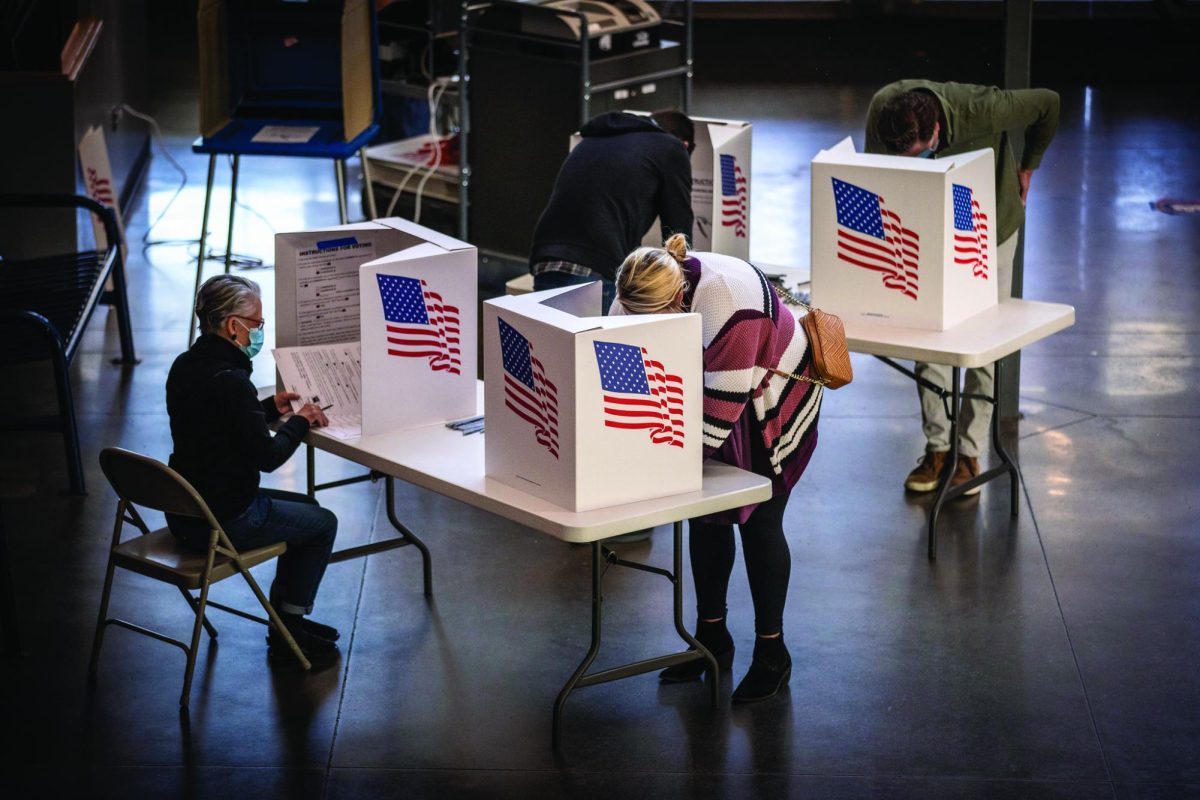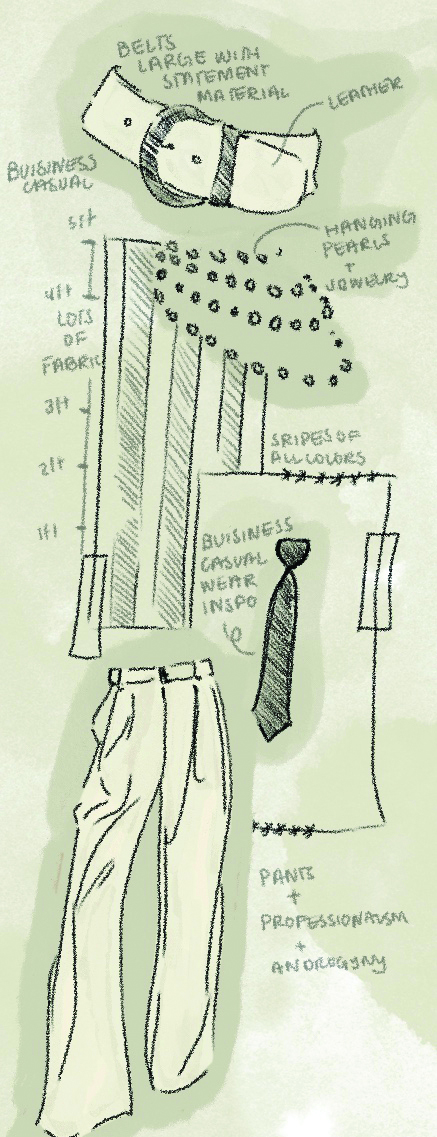By Celine ’11 and Sophie ’13
 On Oct. 27, five days before the early application deadline, Ariella ’11 sat before her four completed college applications. She’d spent the previous weeks filling out forms and writing and editing several essays, but now was the hard part – which one to send in
On Oct. 27, five days before the early application deadline, Ariella ’11 sat before her four completed college applications. She’d spent the previous weeks filling out forms and writing and editing several essays, but now was the hard part – which one to send in
Ariella, like several members of the Marlborough senior class, struggled with her choice of where to apply early. While she could have applied regular decision to all of her top four schools, she felt the need to apply early to one of them because of the higher acceptance rate in early admissions.
“There’s definitely a pressure to apply early decision due to the strategy behind it,” she said.
On the same day, down the street at Los Angeles High School, Kearie ’11 perused the tables at his school’s college fair, picking up brochures from Cal State Dominguez Hills, Cal State Los Angeles and UCLA to help him decide where to apply. Though the deadline for Cal State and UC applications was only a month away, he knew he still had to finish the applications, figure out which campuses to apply to and take the required standardized tests. When asked whether he considered applying early to any schools, he said that he had never heard of early admissions.
“I’m applying whenever they’re due,” he said.
On Sept. 12, 2006, Harvard University ignited concern over the fairness of early admissions by announcing that the school would move to a single application deadline of Jan. 1, eliminating their early admission program. Harvard interim President Derek Bok said in the official press release that the decision was part of the school’s effort to make the college process more fair because “early admission programs tend to advantage the advantaged.”
Within the next two weeks, both Princeton University and University of Virginia ended their own early admission programs, and students across the nation prepared for more schools to follow suit. However, over four years later no other schools have ended early admissions, and early decision remains a popular option for affluent students. If schools claim to seek socioeconomic diversity in their student bodies, then why do they still have early admissions?
Taking advantage of early
According to Michael Heeter, Co-Director of College Counseling at Marlborough, early admissions allows a student to indicate interest in a school. One factor in the highly influential annual U.S. World & News Report rankings of colleges is how many accepted students go on to attend the school. To boost that number, schools accept students who have indicated the school is their first choice, guaranteeing matriculation.
“It’s by design a ‘you scratch my back, I’ll scratch yours’ kind of approach, where if you’re committing to them early, they’re more likely to want to admit you,” Heeter said.
Many students, like Ariella, feel pressure to apply early decision because of these higher acceptance rates. This year, 80% of Marlborough seniors applied to an early admission program, 25% of which were early decision and 75% early action. Both provide admission decisions in mid-December, but early decision is a binding program, requiring students to attend if accepted.
The colleges themselves also benefit from securing a portion of their incoming freshman class through early admissions, according to Alex Gano, an Undergraduate Admissions Counselor at Vanderbilt University.
“We have a finite 1,600 beds for first-year students. If we enroll more than that, somebody is sleeping on the floor. If we enroll less than that, we are forfeiting tuition revenue that makes possible all of the amazing things that go on at a place like Vanderbilt. By locking in a portion of our class through early decision, we can mitigate that risk,” he said in an e-mail.
However, non-affluent students often can’t take advantage of early admissions. According to LA High College Counselor Julia Pelikhova, most of her students have never heard of the programs, nor are they prepared to compete against the students who have.
“Early admissions is really meant for students who already know exactly where they want to go and they have been preparing their whole life to go to that school,” she said. “The problem is an average student, especially from inner-city Los Angeles, can’t even compete in that pool because they don’t have the resources.”
Preparing since birth
Compared to Marlborough, which touts a 99% matriculation rate, only 25% of LA High’s 572 graduating students continued on to four-year universities in 2010. Very few of them applied early, according to Pelikhova. Part of the reason is that the majority of LA High students apply to public universities, such as UC and Cal State schools, which don’t offer early admissions.
“The atmosphere here, I’d say most [students] are interested in public colleges. Private schools would be too costly, among other barriers,” said Omar ’11.
However, even if these students were informed about early admissions, most said they wouldn’t be inclined to apply early as they struggle just to meet their regular deadlines.
“I think most people are focusing on getting everything settled first, thinking of their actual deadlines,” said Eunice ’11.
Meanwhile, Marlborough students said that they have had college application deadlines in mind for a number of years. According to many students, their parents have been expecting and preparing them to attend college from a young age.
“Of course I’m expected to go to college. It was never a question,” Julia ’11 said.
Come junior and senior year, many parents also directly help with the college process. All Marlborough seniors interviewed for this article said that their parents helped them formulate their college list and proofread their application essays.
“They look over my essays, which is really helpful because they have more experience with writing, and they’ve gone through job applications so they know how to present yourself in the best light,” said Caitie ’11.
However, students at LA High often don’t have the same help. Pelikhova said that most of her students are first-generation college students, so their parents aren’t familiar with the process.
“Their parents are encouraging, but there’s no way they can help because they haven’t had the experience themselves,” she said.
LA High student Katy ’11 explained that without parental pressure, her choice to apply to college was the result of her own motivation.
“Frankly, my parents left that decision up to me. Counselors, teachers, classes; that’s pretty much what got me into going to college. And overall, the opportunity for a better future,” she said.
Without their parents’ help, LA High students primarily rely on the college counseling office to help them with their applications. However, with one college counselor serving all 417 students, Pelikhova knew when she started her job four years ago that she had to develop a better way to reach out to all students.
Consequently, Pelikova created a peer counseling system in which 16 seniors serve as assistants in the College Office, working during their free periods to provide guidance to fellow classmates throughout the application process. She also developed application workshops designed to help students write personal statements and fill out applications.
However, even with improved outreach tactics, students said that the system still requires them to take initiative to seek out available resources.
“I think it’s accessible to the students who are really motivated. You have to go there yourself and get the information. Nobody’s going to come around and tell you to keep going,” Casey ’11 said.
Marlborough’s college counseling system, on the other hand, actively guides each student, assigning them to one of two college counselors in December of their junior year and requiring them to meet several times during their senior year.
“In the beginning of this year, I probably met with them once a week because I had to finalize my college list and things like that, but now I go in for small questions probably like three times a week,” said Jackie ’11.
The college office also hosts a number of events to familiarize students with the college process. In junior year, students are required to attend Case Study Night, where admissions officers lead small student groups through a mock admissions decision, and workshops about recommendation letters and resumes. In senior year, students have the opportunity to meet with admissions representatives from various colleges and universities.
“Sometimes it’s our actual readers, like the people who read our application,” Ariella said of the visiting admissions representatives.
“Not so significant”?
With all these resources, students from schools like Marlborough are in the position to complete their applications by November for early admissions, while students from schools like LA High are not. It was this discrepancy that inspired Princeton to end their early decision program.
Before Princeton eliminated early applications, almost 27% of students who applied early were admitted, compared to less than 8% who applied regular decision. University President Shirley Tilghman said in the school’s official press release that “the discrepancy between the two rates is particularly worrisome in light of the demographic differences between the two applicant pools, with the early pool significantly more affluent, less international, and less diverse… Students and schools in less affluent neighborhoods clearly find themselves at a competitive disadvantage as colleges admit a third to a half of their classes before these students even apply.”
However, highly selective institutions who have not eliminated early admissions claimed they haven’t found drastic differences between their two applicant pools.
Peter Johnson, Director of Undergraduate Admissions at Columbia University, said in an e-mail that “[W]hile there were a greater number of students from privileged backgrounds in our ED pool, the difference in the ED and RD pools was not so significant.”
Gano, Undergraduate Admissions Counselor at Vanderbilt, also acknowledged a difference between early and regular applicants, but said that early admissions favors the wealthy “by less of a margin than one might expect.”
And yet, even at Marlborough, students on financial aid are discouraged from applying early because they won’t have the opportunity to compare financial aid packages. Bre ‘11 said that because she’s applying for financial aid, she was advised to apply early action to a school that is not in her “top 5” rather than early decision to her first choice school.
“I’m slightly annoyed that I can’t apply early to my top choice because while all of my other friends are applying early decision, I was encouraged by my college counselor and my mom to look at all my options in April,” she said.
While some Marlborough girls find early admissions unfair, others acknowledged that this, like many other aspects of the college process, leaves frustrated students with little say in the matter. Gaby ‘11 expressed resignation upon hearing the conflicting accounts of early and regular applicant pools from top colleges.
“As much as we want it to be about personal talent, we can’t escape the fact that money plays a huge role,” she said.












